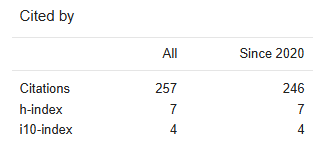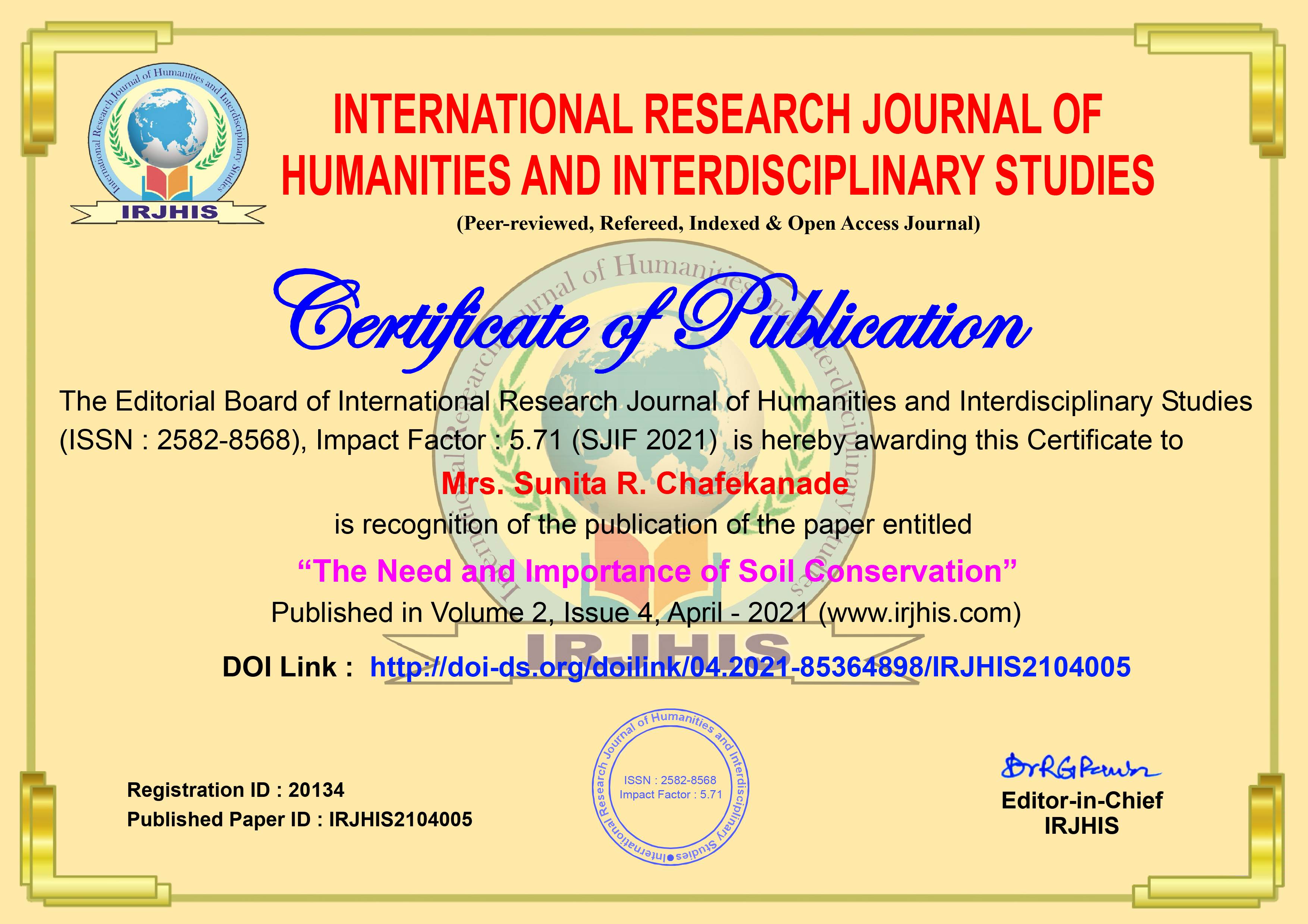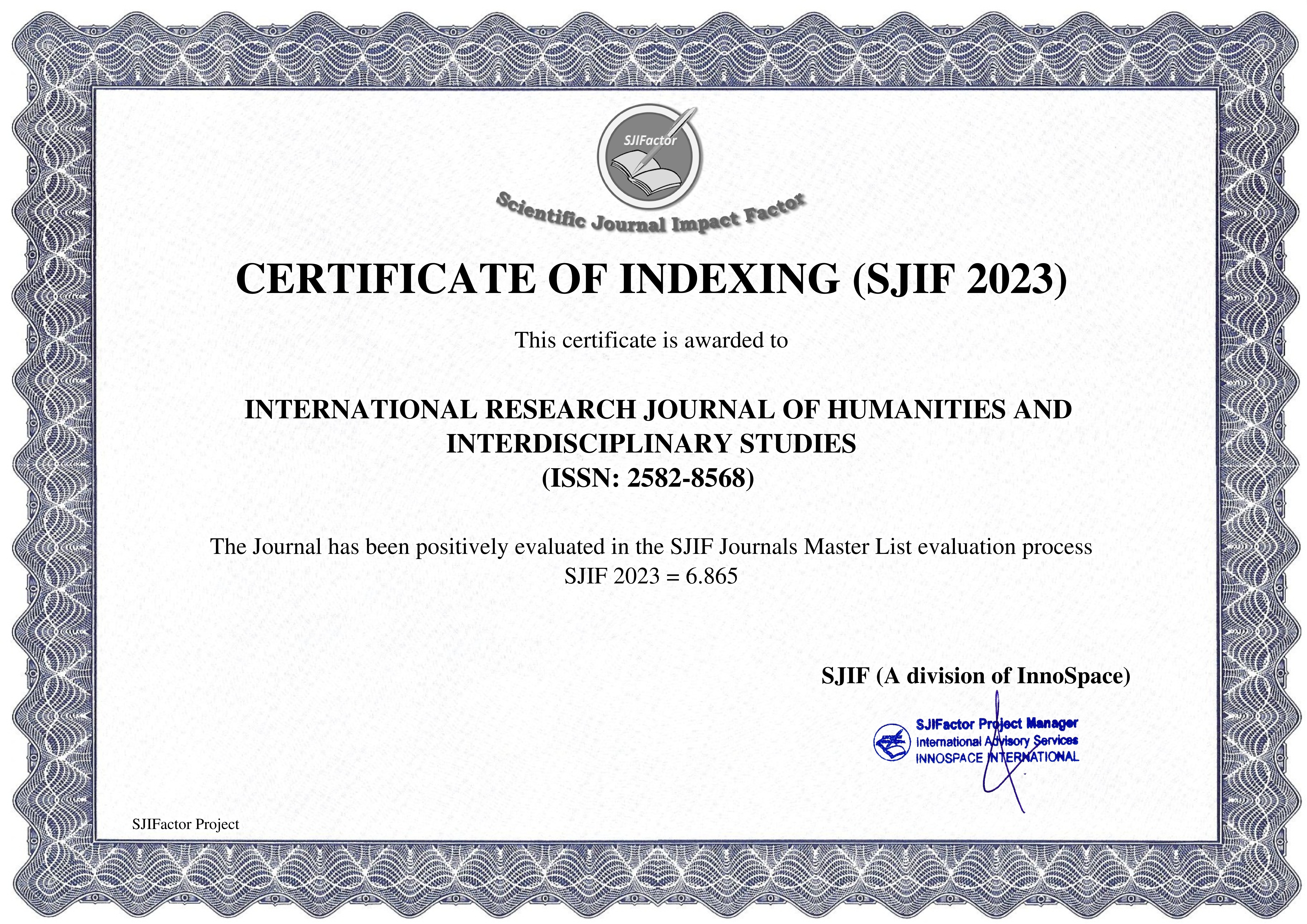Paper Details


Call For Papers
Volume 06, Issue 12
Frequency: 12 Issue per year
Paper Submission: Throughout the Month
Acceptance Notification: Within 2 days
Areas Covered: Multidisciplinary
Accepted Language: Multiple Languages
Journal Type: Online (e-Journal)
Announcement

Publish books with ISBN Number
- Edited Book
- Text Book
- Ph.D Thesis
- Conference Proceedings
ISSN Number:
2582-8568
Journal DOI No:
03.2021-11278686
Title:
A STUDY OF INTELLECTUAL PROPERTY RIGHTS AND ITS SIGNIFICANCE FOR BUSINESS
Authors:
Cite this Article:
,
A STUDY OF INTELLECTUAL PROPERTY RIGHTS AND ITS SIGNIFICANCE FOR BUSINESS, International Research Journal of Humanities and Interdisciplinary Studies (www.irjhis.com), ISSN : 2582-8568, Volume: 3, Issue: 5, Year: May 2022, Page No : 132-140,
Available at : http://irjhis.com/paper/IRJHIS2205020.pdf
Abstract:
The term IPR refers to the innovations, literary works, and creative creations, as well as the names, symbols, and pictures utilized in commercial transactions. The rights to intellectual property are similar to those to any other type of property. They make it possible for the inventors of patents, trademarks, or copyrighted works to profit from their own effort or investment in a product while protecting their intellectual property rights. The right to benefit from the protection of moral and material interests resulting from authorship of scientific, literary, or artistic productions were explained in the Article 27 of the Universal Declaration of Human Rights. This right is outlined as the right to benefit from the protection of moral and material interests resulting from authorship of scientific, literary, or artistic productions. IPR also refers to the mental creations of individuals, including but not limited to inventions, literary and creative works, designs, and commercially-used symbols, names, and pictures. This paper also discusses the background of intellectual property rights, as well as its law related to IPR. On the basis of a public readiness to confer the status of property, ideas, innovations, and creative expressions have been identified as being under the purview of intellectual property rights, which is an abbreviation for intellectual property rights. IPR offer certain exclusive rights to the inventors or creators of that property, in order to enable them to reap financial advantages from their creative efforts or reputation. These rights allow the inventors or creators to profit from their creative efforts or reputation. There are many different kinds of legal safeguards for intellectual property, such as patents, copyrights, trademarks, and so on. A patent is a kind of recognition that is granted for an invention that meets the requirements of being globally unique, being non-obvious, and having a practical use in industry. There are many conventions and Session were conducted at international level. With reference to that Amendments were made in existing laws.
Keywords:
Intellectual, Property Rights, Business, TRIP, WTO, Act, Infringements, Punishment, Fine, etc.
Publication Details:
Published Paper ID: IRJHIS2205020
Registration ID: 20738
Published In: Volume: 3, Issue: 5, Year: May 2022
Page No: 132-140
ISSN Number: 2582-8568
Download Full Paper: Click Here
Article Preview:





